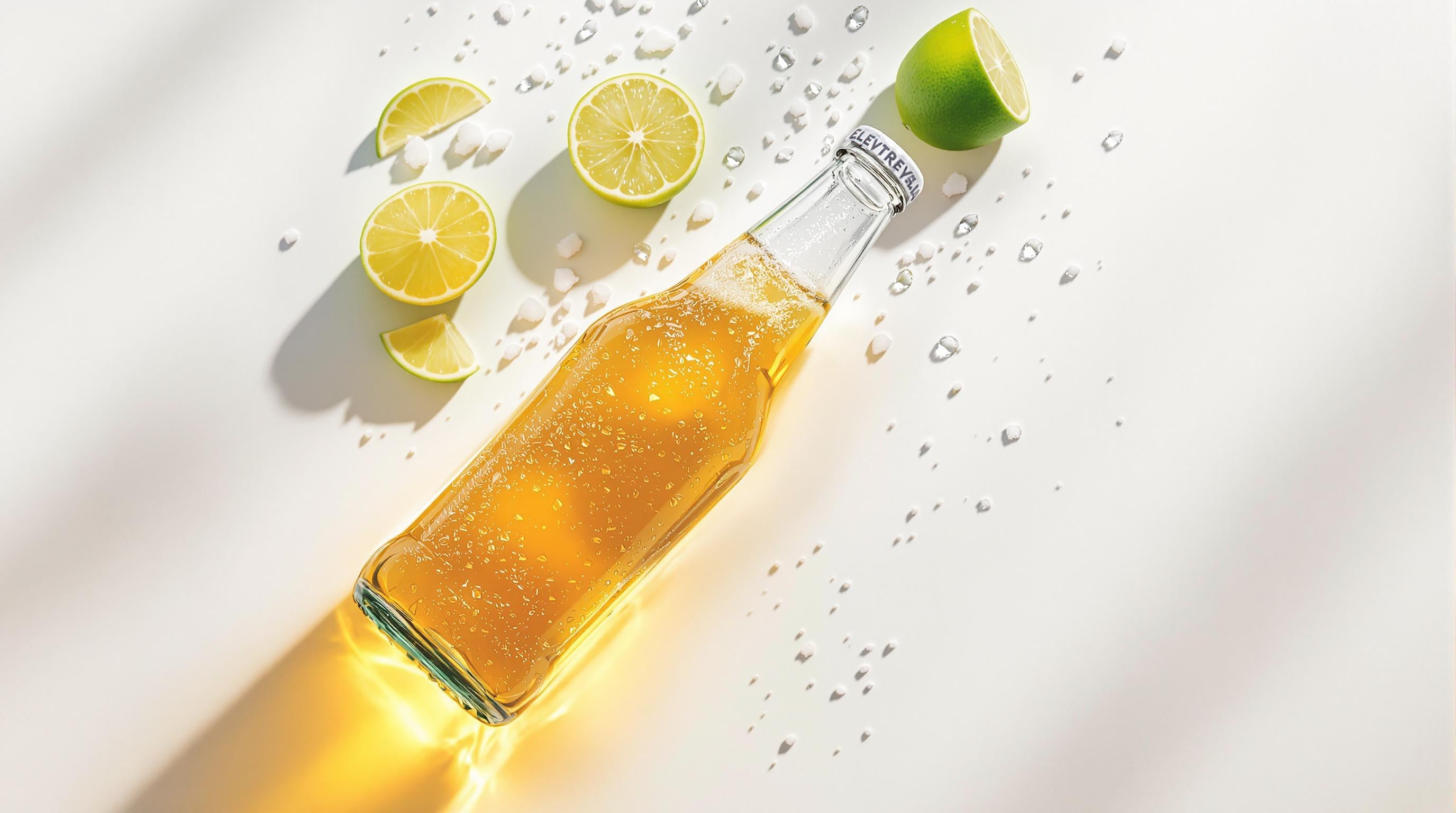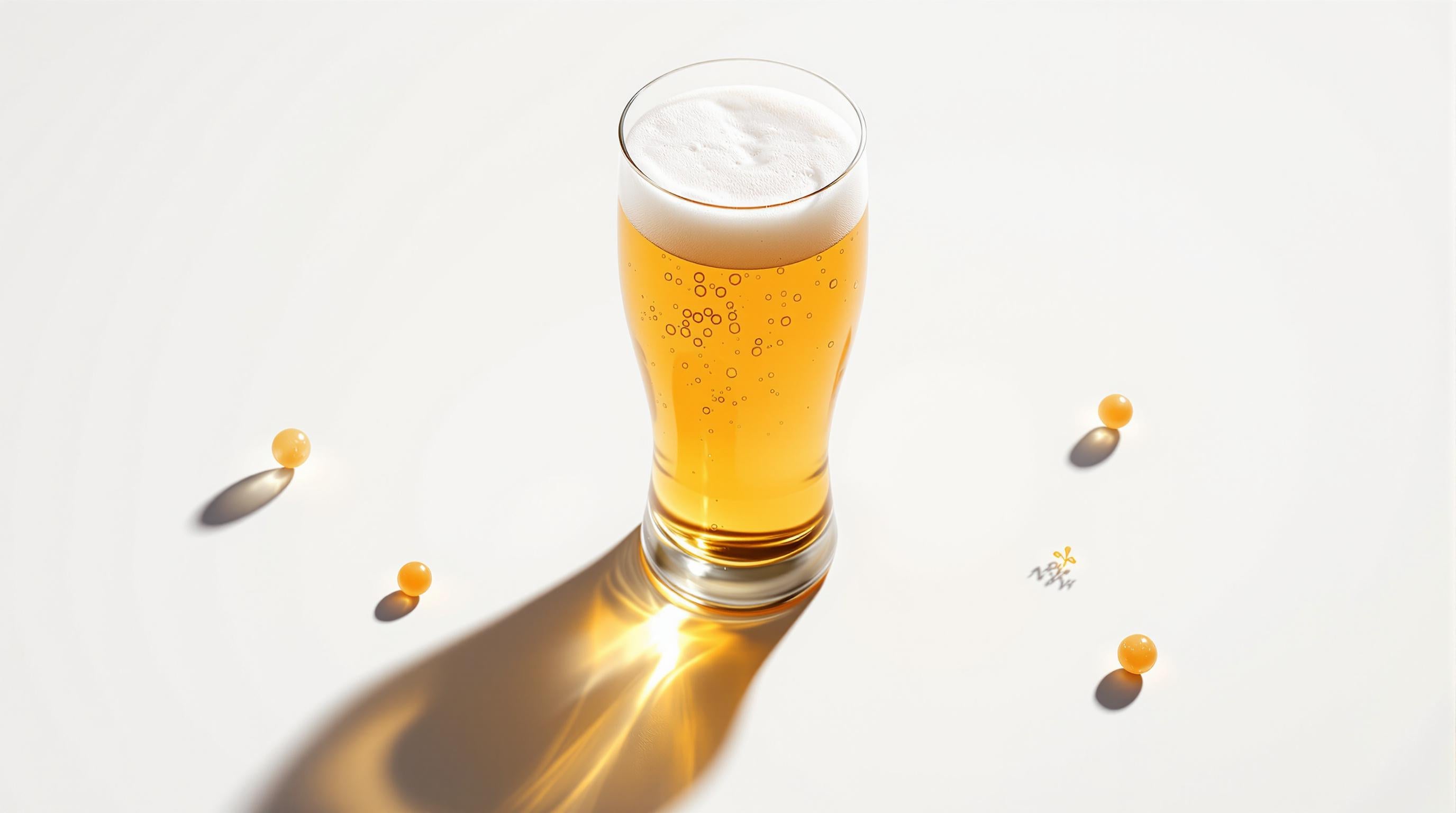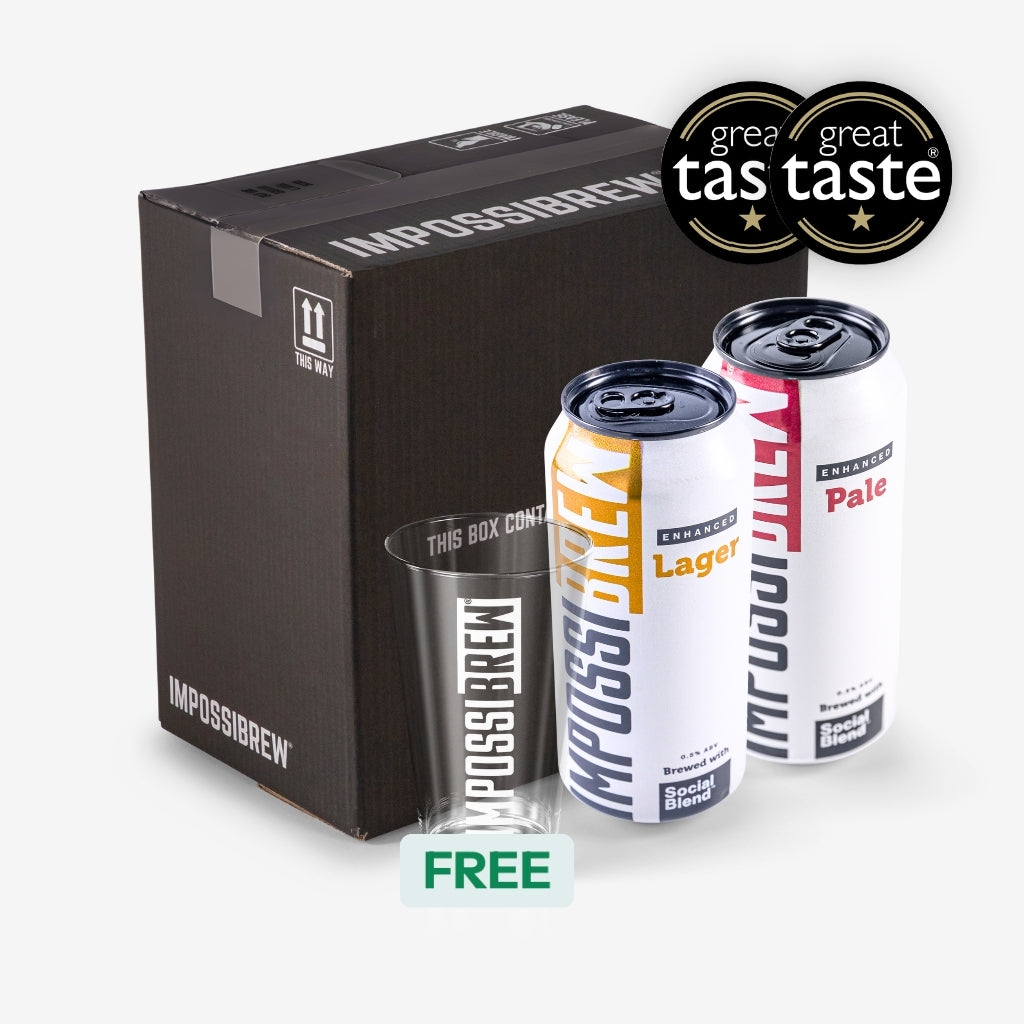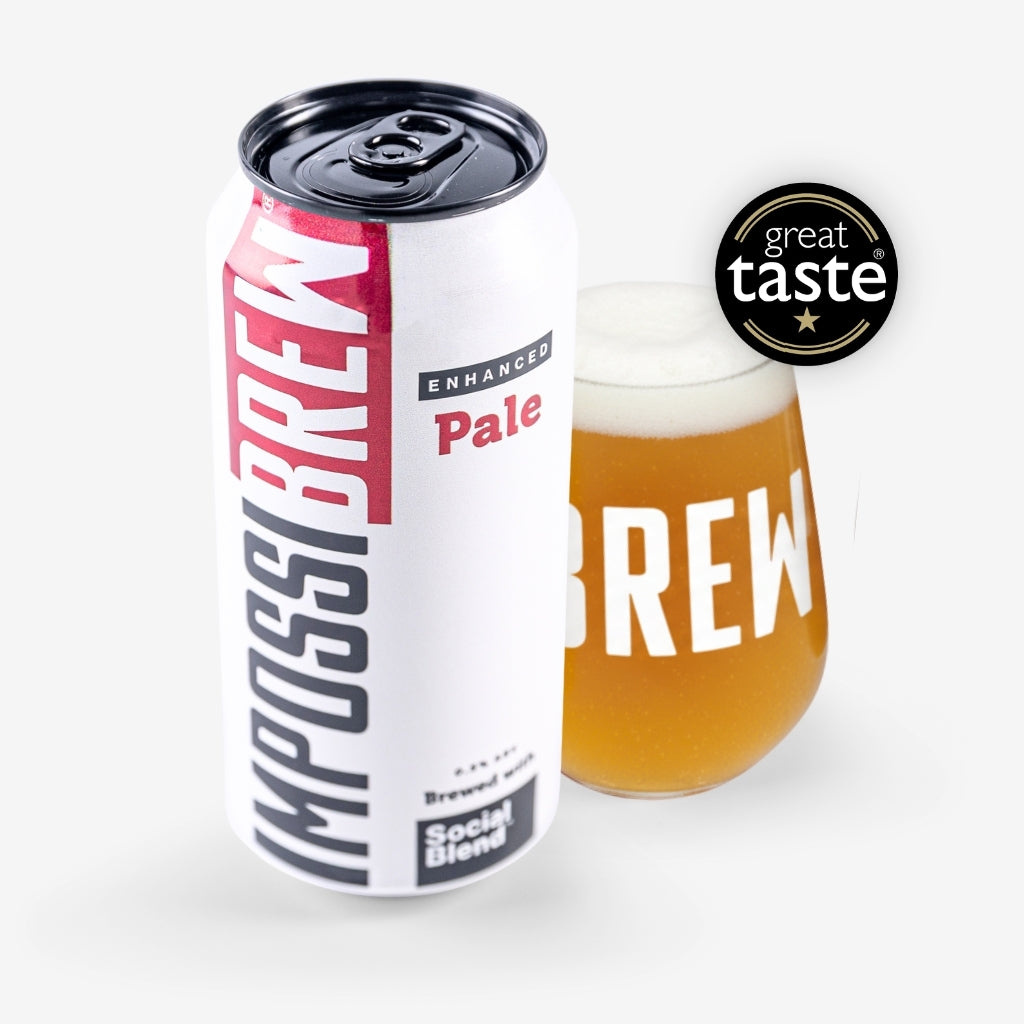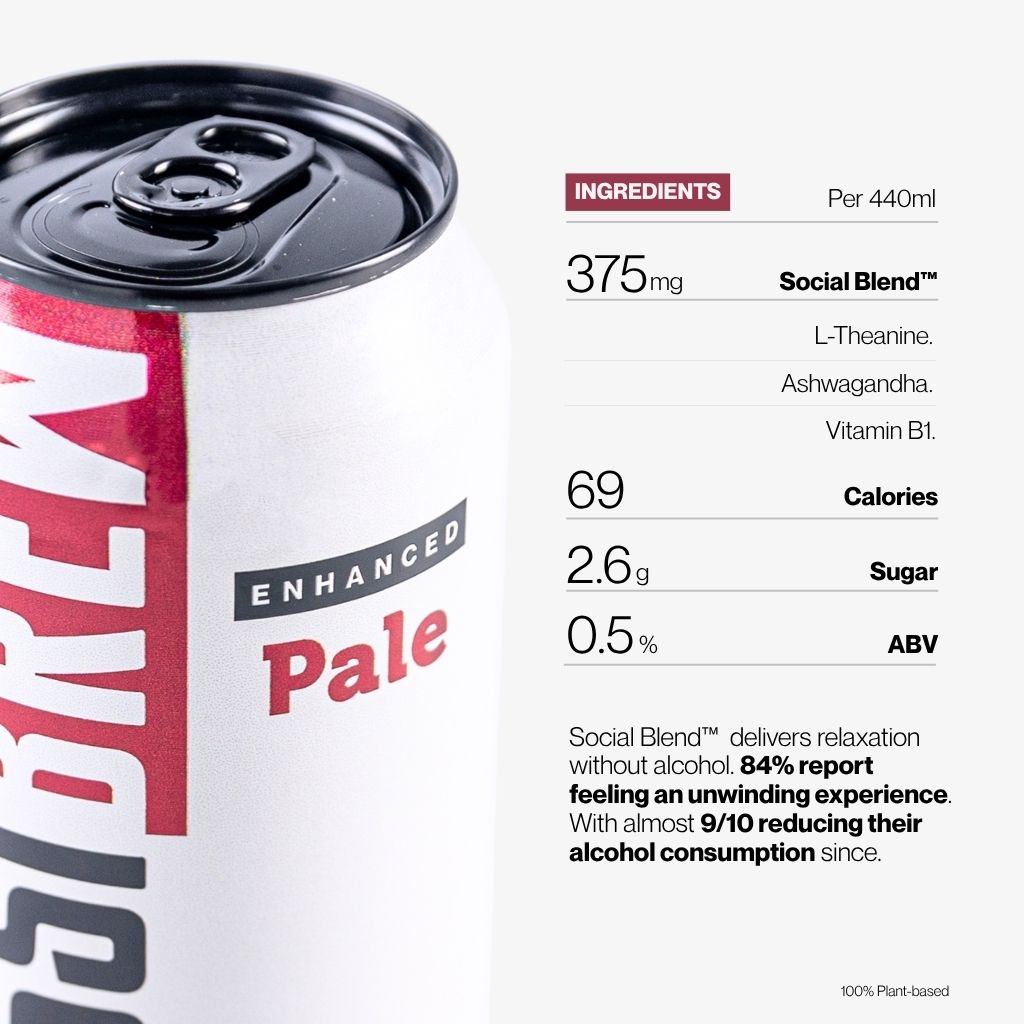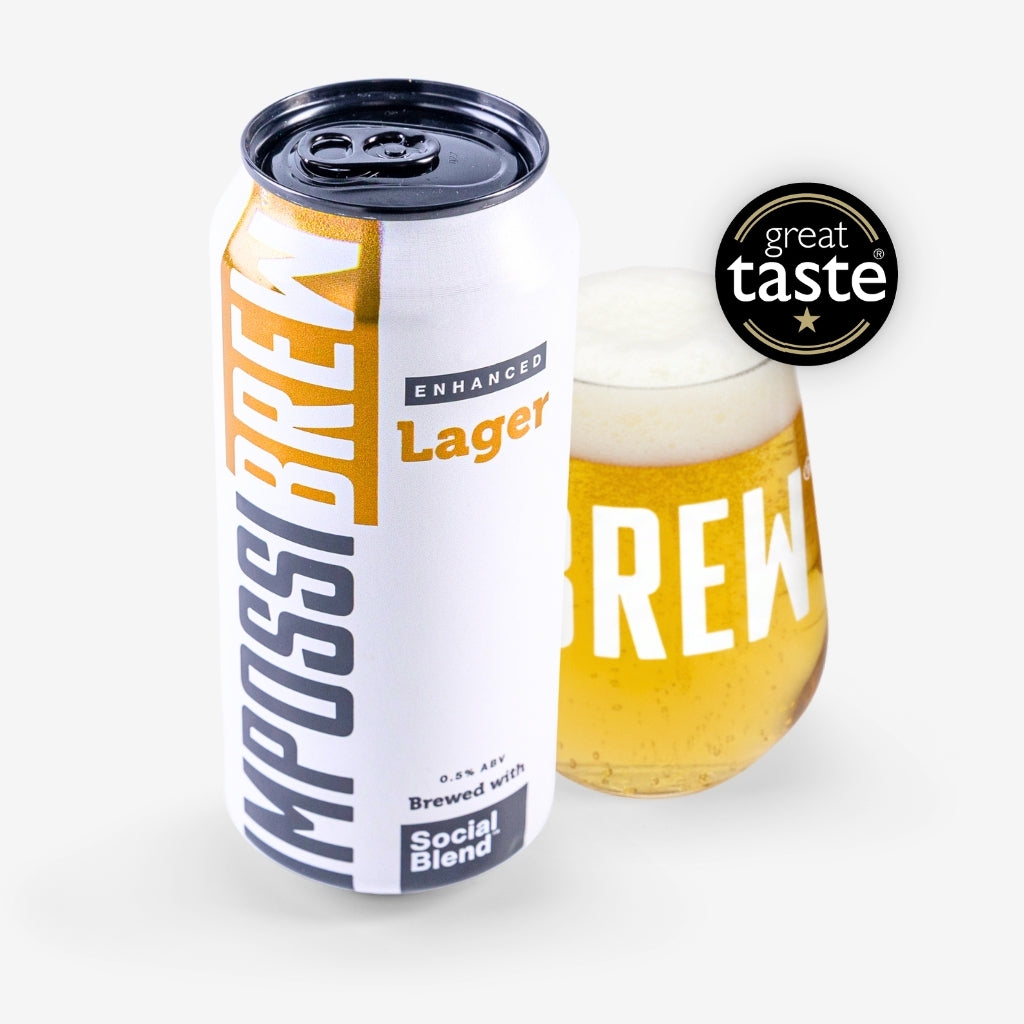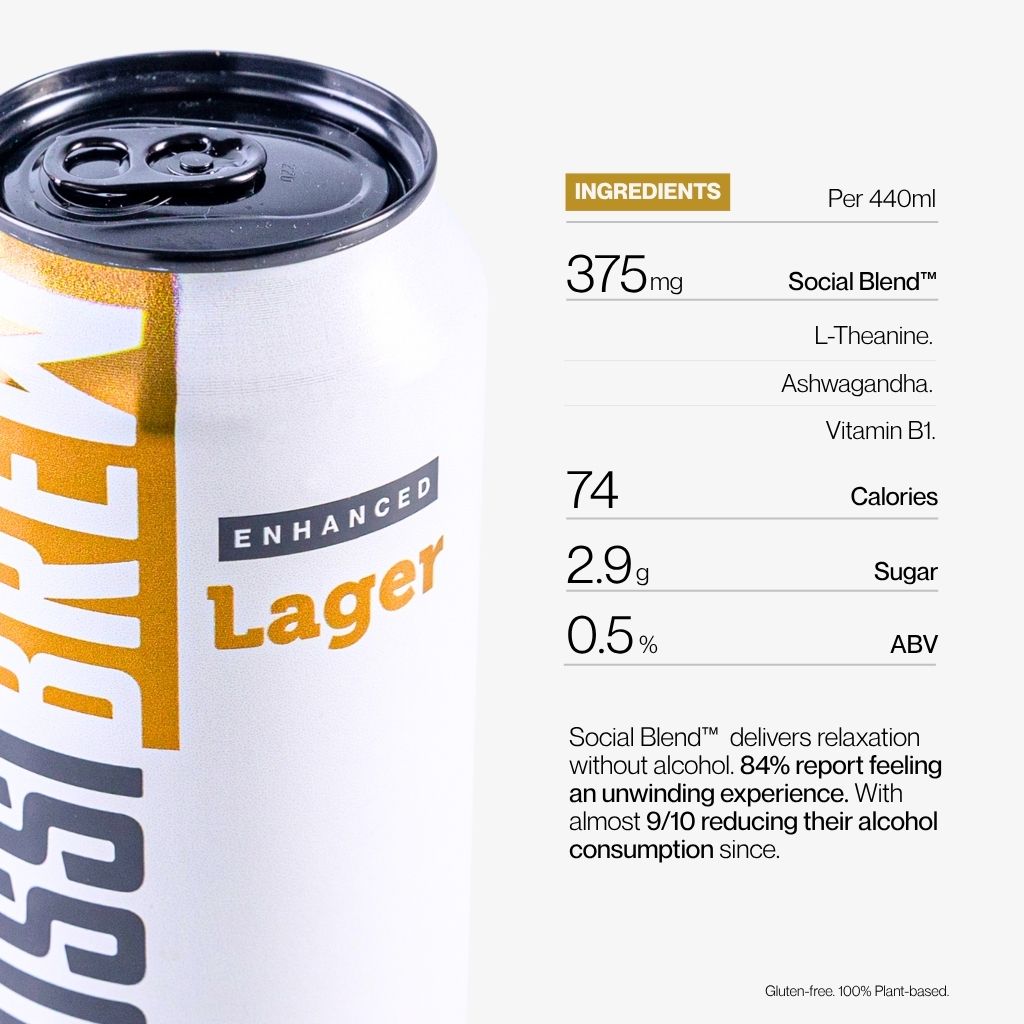Non-Alcoholic Beer vs. Sports Drinks: Which Hydrates Better?
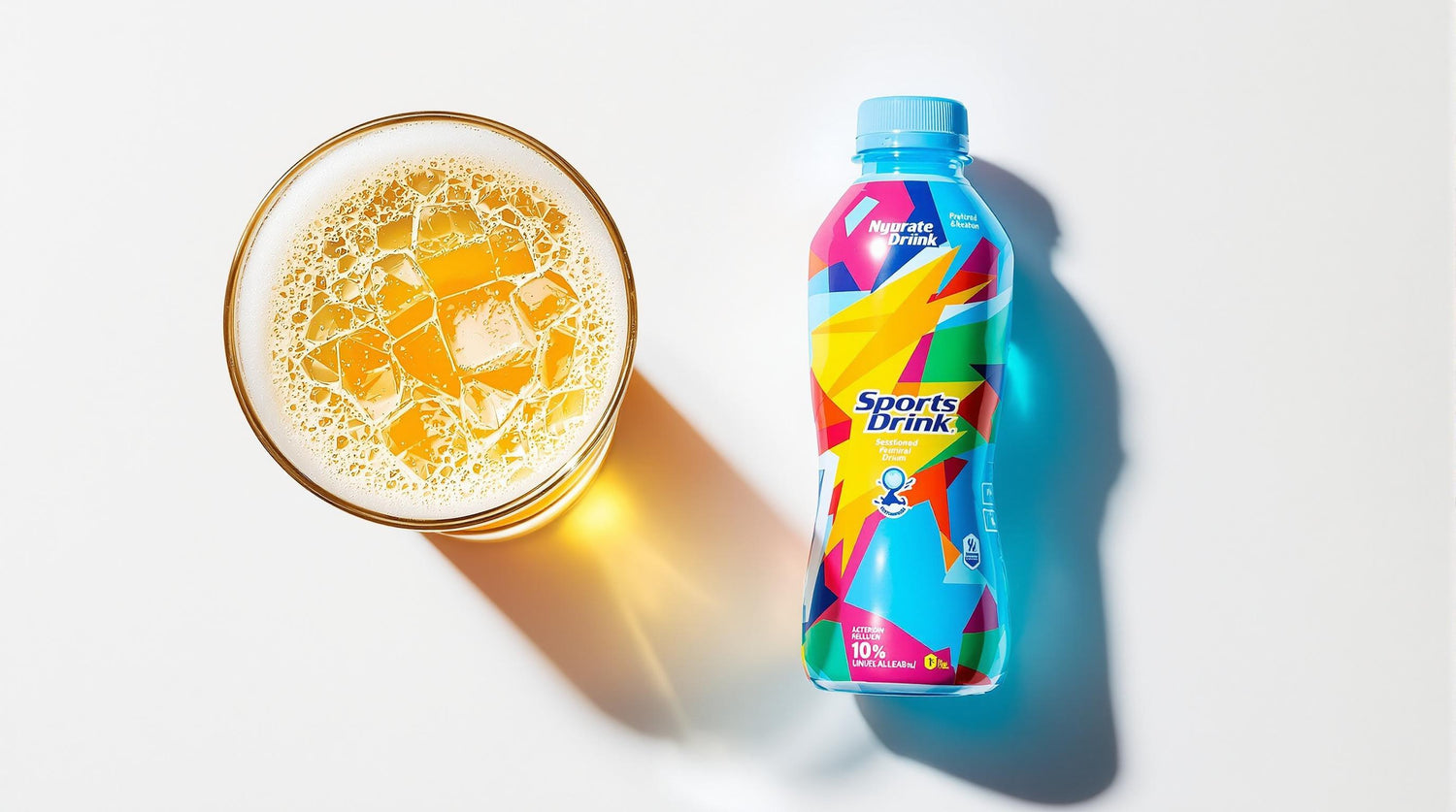
Non-alcoholic beer and sports drinks serve different purposes when it comes to hydration. Sports drinks are ideal for high-intensity workouts, offering quick electrolyte replenishment with over 250mg of sodium per serving. Non-alcoholic beer, on the other hand, is better suited for moderate activities or recovery, thanks to its natural sodium-to-potassium ratio and added benefits like polyphenols and antioxidants.
Quick Comparison
| Feature | Non-Alcoholic Beer | Sports Drinks |
|---|---|---|
| Best Use Case | Moderate activity, recovery | High-intensity workouts |
| Sodium Content | Lower | 250mg+ per serving |
| Potassium Content | Higher | Lower |
| Carbohydrates | 1.9-3.2% | 3-4% |
| Additional Benefits | Polyphenols, antioxidants | Quick energy replenishment |
For intense exercise, go with sports drinks. For recovery or light activities, non-alcoholic beer is a great option. Keep reading for more details on how these beverages compare.
Why non-alcoholic beer is better after exercise, study shows
Hydration Factors: Composition and Function
Electrolytes and Minerals
Hydration drinks work largely because of their electrolyte and mineral content. Sports drinks are packed with sodium to quickly replace electrolytes, while non-alcoholic beer offers more potassium, which helps maintain balanced hydration.
Non-alcoholic beer's sodium-to-potassium ratio is particularly useful for fluid retention during exercise [1]. This mix of naturally occurring minerals supports hydration at a cellular level, especially during moderate activity or recovery.
Carbohydrates and Energy
Both sports drinks (3-4% carbs) and non-alcoholic beer (1.9-3.2% carbs) fall within the ideal range for hydration and energy replenishment. These carbohydrate levels help your body absorb fluids efficiently while also providing energy during physical exertion.
| Component | Non-Alcoholic Beer | Sports Drinks | Hydration Impact |
|---|---|---|---|
| Carbohydrates | 1.9-3.2% | 3-4% | Effective for fluid absorption |
| Sodium | Lower concentration | Higher concentration | Better for high-intensity exercise |
| Potassium | Higher levels | Lower levels | Boosts cellular hydration |
Isotonic Properties and Absorption Rates
Studies suggest that non-alcoholic beer, especially when fortified with electrolytes, can match the isotonic properties of sports drinks. Brands like IMPOSSIBREW® take this even further by adding functional ingredients, blending hydration benefits with social enjoyment.
The way these drinks are absorbed depends on their purpose. Sports drinks are designed for quick absorption during intense workouts, while non-alcoholic beer provides steady hydration, making it a great choice for moderate activities or post-exercise recovery.
These factors lay the groundwork for exploring how these beverages perform in practical, everyday scenarios, as shown in research findings.
Research Findings: Hydration Effectiveness
Non-Alcoholic Beer as a Hydration Option
Research shows that non-alcoholic beer can help maintain hydration due to its balanced sodium-to-potassium ratio. This makes it a good choice for moderate physical activity. Its natural mineral content is especially helpful during longer periods of exercise [1].
Brands like IMPOSSIBREW® highlight how non-alcoholic beers are evolving by adding functional ingredients, making them appealing not just for recovery but for broader hydration needs.
Sports Drinks and Rehydration
Sports drinks are designed for situations where quick rehydration is critical, such as during extended, high-intensity workouts. With over 250mg of sodium per serving, they are particularly effective in hot environments and demanding physical conditions [3][4].
Comparing Hydration Options
| Component | Non-Alcoholic Beer | Sports Drinks | Best Use Cases |
|---|---|---|---|
| Sodium Content | Lower concentration | 250mg+ per serving | Sports drinks: Intense exercise |
| Electrolyte Balance | Natural mineral profile | Engineered formula | Sports drinks: Quick rehydration |
| Added Benefits | Polyphenols, immune support | B vitamins | Non-alcoholic beer: Recovery |
sbb-itb-a752bf8
Practical Uses: Real-Life Scenarios
Use During Physical Activity
Your hydration needs depend on how hard and how long you're working out. For intense workouts lasting more than an hour, sports drinks are a go-to, offering over 250mg of sodium to help you rehydrate quickly. They're perfect for marathon training or team sports. On the other hand, non-alcoholic beer fits better with moderate activities like recreational cycling or as a recovery drink after a workout.
Use in Social and Daily Life
Non-alcoholic beer is a great alternative to traditional alcoholic drinks in social settings. Some brands, like IMPOSSIBREW®, even include functional ingredients that make these beverages useful for hydration. They're ideal for designated drivers or anyone taking part in challenges like Dry January.
Meanwhile, sports drinks are also handy for people with physically demanding jobs, helping them stay hydrated throughout their workday.
Additional Health Benefits
Non-alcoholic beer contains polyphenols, which can support your immune system and aid recovery during training seasons [2]. Sports drinks, on the other hand, often include B vitamins that help with energy metabolism [3]. As nutrition specialist Patton explains:
"H2O will get the job done in most cases", but for specific situations, these enhanced beverages can provide targeted benefits [3].
| Activity Type | Recommended Choice | Key Benefit |
|---|---|---|
| High-Intensity Exercise | Sports Drinks | Quick electrolyte replenishment |
| Moderate Activity | Non-Alcoholic Beer | Hydration and recovery support |
| Social Settings | Non-Alcoholic Beer | Hydration with added relaxation |
| Professional Sports | Sports Drinks | Energy boost and electrolyte balance |
Knowing how to match the right drink to your activity can make a big difference in staying hydrated and performing your best.
Conclusion: Choosing the Best Hydration Drink
Key Insights
Sports drinks are great for quick hydration, especially during intense or prolonged physical activity. They shine in situations where replenishing electrolytes quickly is a priority.
Non-alcoholic beer, on the other hand, hydrates as well as water and comes with added perks like antioxidants and polyphenols, which can aid in recovery [1][2]. These drinks cater to different needs depending on the activity and context.
| Activity Level | Best Choice | Key Benefit |
|---|---|---|
| High-Intensity | Sports Drinks | Quick hydration |
| Moderate Activity | Non-Alcoholic Beer | Recovery support |
Choosing the Right Option
Deciding between these drinks depends on your circumstances. For high-intensity workouts or hot weather, sports drinks deliver the energy and electrolytes needed to keep you going [4].
"H2O will get the job done in most cases" [3]
For lighter activities or social occasions, non-alcoholic beer is a solid option. Studies, including one from 2016, confirm its effectiveness for general hydration [1]. Brands like IMPOSSIBREW® even infuse these beers with functional ingredients, making them a good fit for hydration in social settings.
Think about your activity level, exercise duration, and the environment when deciding. If you're a casual athlete or someone enjoying recreational sports, non-alcoholic beer can double as a hydration and recovery option. For those pushing their limits in competitive sports or tough conditions, sports drinks are the better choice to keep you performing at your best.
FAQs
Does non-alcoholic beer count as fluid intake?
Yes, it does! Non-alcoholic beer provides hydration while also delivering electrolytes, carbohydrates, and polyphenols. These elements can support recovery and help reduce inflammation.
"Cycling Weekly notes non-alcoholic beer's polyphenols and electrolytes make it a strong post-workout hydrator." [1]
It works well both after exercise and in social settings. For the best hydration boost, drinking non-alcoholic beer about 45 minutes before a workout is ideal, thanks to its balanced sodium-to-potassium ratio.
Knowing how non-alcoholic beer fits into your hydration routine can help you decide when to choose it over traditional sports drinks.
Related posts
Next Generation Alcohol-Free Beer
IMPOSSIBREW®: The Enhanced Non-Alcoholic Beer designed as an alternative to full ABV beers using patent-pending technology*.
Enjoy a healthier daily wind down with the beer that matches the taste and feeling of traditional alcohol.
Keep the pleasure and ritual of drinking without worrying about your health.
Get Started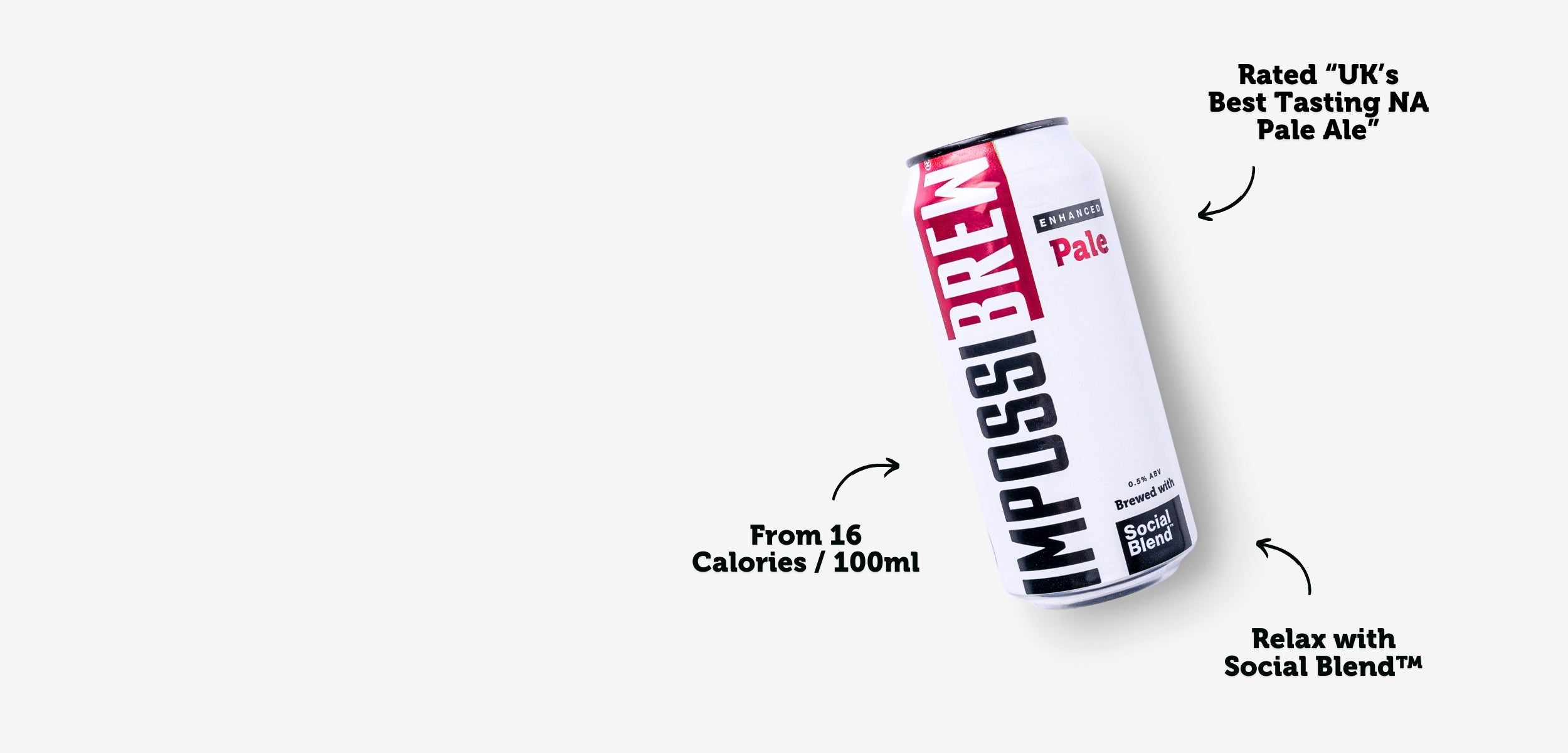
Next Generation Alcohol-Free Beer
IMPOSSIBREW®: The Enhanced Non-Alcoholic Beer designed as an alternative to full ABV beers using patent-pending technology*.
Enjoy a healthier daily wind down with the beer that matches the taste and feeling of traditional alcohol.
Keep the pleasure and ritual of drinking without worrying about your health.
Get StartedAward-winning Taste
Rated "UK's Best Non-Alcoholic Beer" by the prestigious World Beer Awards.
From 16 Calories / 100ml
Low Calorie. Low Carb. Vegan-friendly. <0.5% ABV. Gluten-Free (Lager)
Social Blend™
Our proprietary alcohol alternative made from a blend of science-backed ingredients designed to replicate the sensory, social and relaxing experience of drinking. Read more here.
Got Questions?
Find our most commonly asked questions below or ask our AI Brewer for instant answers.
What is IMPOSSIBREW®?
IMPOSSIBREW® is a pioneering non-alcoholic beer brand based in the UK that aims to create the world's most complete alcohol alternative using patent-pending technology.
Founded by Mark Wong in 2021 and working with some of the world's best professors, scientists and expert brewers, IMPOSSIBREW® specialises in expertly crafted non-alcoholic beers designed to match full ABV beers in both taste and feeling.
Product Range
IMPOSSIBREW® offers a range of enhanced non-alcoholic beers, including:
- Enhanced Lager (0.5% ABV)
- Enhanced Pale Ale (0.5% ABV)
- Limited Editions (Seasonal)
Key Benefits
The key feature that sets IMPOSSIBREW® apart is its proprietary "Social Blend™" - a combination of active botanical ingredients and nootropics using patent-pending technology* designed to recreate the relaxing effects of alcohol without the negative side effects.
Along with record-breaking quality flavour that comes from a unique process without removing alcohol.
Social Blend™ Ingredients
Developed with leading scientists in top UK universities, Social Blend™ includes:
- L-Theanine
- Ashwaghanda
- Soluble Plant Fibres
- Vitamin B1
- Various Plant Extracts.
These ingredients are chosen for their potential to boost serotonin, promote relaxation, and create a calming effect similar to the "one or two pint feeling" without hangovers.
See more details on our very own research paper, with over 1,000 participants:
- More than 70% said they felt relaxed after consuming IMPOSSIBREW®.
- 88% have reduced alcohol consumption since discovering IMPOSSIBREW®.
- 95% have told a friend about IMPOSSIBREW® after trying.
- 3/4 say that IMPOSSIBREW® is "the most complete alcohol alternative currently available on the market today".
Recognition
IMPOSSIBREW® has received several notable achievements:
- Featured on BBC's Dragons' Den
- Awarded the first and only Gold Medal in the No/Low beer category from the London Beer Competition
- Received multiple industry Gold awards in categories against Full-ABV beers
- Most followed No/Low Alcohol brand on TikTok globally.
Mission and Vision
IMPOSSIBREW® is on a mission to redefine non-alcoholic drinking by creating better-than-alcohol alternatives for those who love beer but want to avoid the health risks associated with alcohol consumption.
The company aims to become the global leading alcohol alternative brand, focusing on helping people transition to a healthier mode of relaxation without the traditional issues and side effects of alcohol.
Production and Ingredients
IMPOSSIBREW® combines traditional brewing methods with their proprietary Social Blend™ along with patent-pending technology*
The beers are made with traditional brewing ingredients such as water, malted barley, wheat, hops, and yeast, in addition to the Social Blend™ components - leveraging their unique cryogenic fermentation process, which means no alcohol is ever removed from the product - ensuring the most authentic quality taste you've come to expect.
Who is it for?
IMPOSSIBREW® caters to consumers who:
- Are busy professionals and parents who would like to unwind with a drink but don't want the hangovers.
- Enjoy the taste and relaxing experience of beer
- Are looking for healthier alternatives to alcohol, with lower calories, carbs and sugar
- Want to avoid hangovers and other negative effects of alcohol consumption
- Are interested in functional beverages with potential mood-enhancing properties
By offering a unique product that aims to replicate both the taste and feeling of alcoholic beer, IMPOSSIBREW® is positioning itself at the forefront of the growing non-alcoholic beverage market.
Get Started Today
Give it a try today with our Welcome Bundle and get 2 Free Beers with your first purchase. Get it delivered straight to your door, risk-free with our 30-day money-back guarantee.
We hope you enjoy them as much as we do and we can't wait for you to try.
*Patent pending in the UK under application number GB2415685.3
How does 'Social Blend™' work?
Social Blend™ is our proprietary alcohol alternative made from a blend of science-backed ingredients using patent-pending technology*.
Designed to replicate the sensory and social relaxing experience of drinking, minus the headaches (and bad decisions).
Developed with Dr Paul Chazot, Bioscience Professor and Chair of Pharmacology at Durham University.
Key Components and Mechanisms
- L-Theanine:
- Ashwagandha Root:
- Vitamin B1 (Thiamine):
- Various nootropic herbs:
Benefits
- Relaxation: The blend promotes a state of relaxation without the sedative effects typically associated with alcohol.
- Mental Calm: By boosting alpha brain waves and serotonin levels, it helps maintain a calm and focused mental state.
- Stress Relief: The combination of L-Theanine, Ashwagandha, and Vitamin B1 helps mitigate stress and anxiety.
- Mood Enhancement: The inclusion these ingredients and other botanicals supports mood regulation and overall positive outlook.
IMPOSSIBREW®'s Social Blend™ is a carefully crafted combination of nootropic and adaptogenic ingredients designed to offer a relaxing and mood-enhancing experience without the drawbacks of alcohol. It leverages the natural properties of its components to promote relaxation, reduce stress, and enhance mood, making it a unique alternative to traditional alcoholic beverages.
(Read our latest research paper here)
*Patent pending in the UK under application number GB2415685.3
Do you ship overseas?
We ship to the UK Mainland for free when you spend over £35
We aim to expand internationally soon - stay tuned!
If you have any queries, feel free to email: hello(@)impossibrew.co.uk
How long will it take to get my orders?
For UK mainland deliveries, normal orders processed here will take 1-3 business days to arrive, with an optional upgrade to Next Day Delivery available (12pm cut-off).
Delivery details will be provided in your confirmation email.
How is 0.5% ABV alcohol-free?
Yes, we know it's confusing. Isn't 0.5% ABV still alcoholic? Officially, 0.5% ABV is classified as Dealcoholised.
- In fact, most things we consume daily have more than 0.5% ABV
- Burger Rolls - 1.2% ABV
- Orange Juice - 0.5% ABV
- Ripe Banana - 0.5% ABV
After more than 2 years of research, we've found that the 0.5% ABV from our natural brewing process significantly increases both flavour and mouthfeel - without spiking your blood alcohol level (BAC).
Is it really gluten-free?
Yes, IMPOSSIBREW® Enhanced Lager is gluten-free. Even though it contains wheat and barley, our beers have been third-party tested to contain less than 10 parts per million (PPM) of gluten, which meets the criteria to be listed as, and labeled gluten-free.
Does it have alcohol tax?
No. While it is true that our beers don't contain alcohol, and thus don't incur UK alcohol duty, we'd like to highlight some factors here that might be helpful in reflecting the value we provide.
- One-to-One Brewing Process: At IMPOSSIBREW, we take pride in our unique brewing techniques. Unlike other non-alcoholic beers, our products are never diluted, watered-down, or have their alcohol content removed - and some even dilute their alcoholic beers up to 5x. This means that our brewing process involves the same level of craftsmanship, time, and resources as a traditional craft beer, resulting in comparable production costs.
- Effective Nootropics: In our commitment to creating the most relaxing non-alcoholic beers, we utilise only the highest quality nootropics as our active ingredients, in safe and effectives dosages. At current alcohol tax rates for a 5% ABV beer, the cost of our nootropics more than double that. Instead of contributing the amounts as tax, why not have it contribute to the product quality itself?
- Small Scale Brewing: Currently, we operate on a smaller scale, which makes us less competitive than large, commercial brewers (often +10,000x our brewing size). As a growing business, we are passionate about our mission to create unique, high-quality non-alcoholic experiences, and we truly appreciate your support. As we continue to grow and expand our production capabilities, we look forward to passing on even more savings to our valued community!
At IMPOSSIBREW, we prioritise offering our customers an enhanced, premium, non-alcoholic beer experience by combining innovative brewing techniques, quality active nootropic ingredients, and award-winning taste. While our pricing may differ from other non-alcoholic competitors, we believe that the value proposition and unique experience our beers provide are well worth it.
At the end of the day, tasting is believing. So give it a try and let us know what you think - risk-free with our IMPOSSIBREW® Guarantee.
Who shouldn't drink IMPOSSIBREW®?
It is not recommended for pregnant or breastfeeding women, those with certain medical conditions like GI disorders or hypertension, or individuals taking specific medications such as antidepressants, immunosuppressants or blood thinners. If you fall into any of these categories, it's best to consult with your doctor first.
Ashwagandha can lead to overstimulation (i.e. restlessness) if taken alongside thyroid medication.
What is your philosophy?
For thousands of years, we had only one way to unwind together. One way to let our guards down. One way to bridge the gap between who we are and who we are with others.
Not because it was perfect. But because it was all we had.
We decided that wasn't good enough.
We exist because we believe in a world where social connection doesn't demand compromise.
Where being present with others doesn't mean being absent from yourself. Where letting go doesn't mean losing control.This isn't about removing alcohol. This is about something better.
Our Social Blend™ technology isn't an accident. It's the result of questioning everything we thought we knew about social drinking. About working with scientists to understand what we're really seeking in these moments of connection. About daring to imagine something that wasn't possible before.
We believe the greatest innovations don't just solve problems - they change how we live. They make us question why we ever settled for less.
That's what we're building. Not just a drink, but a new way forward. A future where social connection comes without compromise. Where tradition meets innovation. Where science meets ritual.
This is the future of social drinking.
Got more questions?
Speak to our AI Brewer here for instant answers.
Or email us at hello@impossibrew.co.uk
Our customer support is available Monday to Friday: 9am - 5:30pm.

















